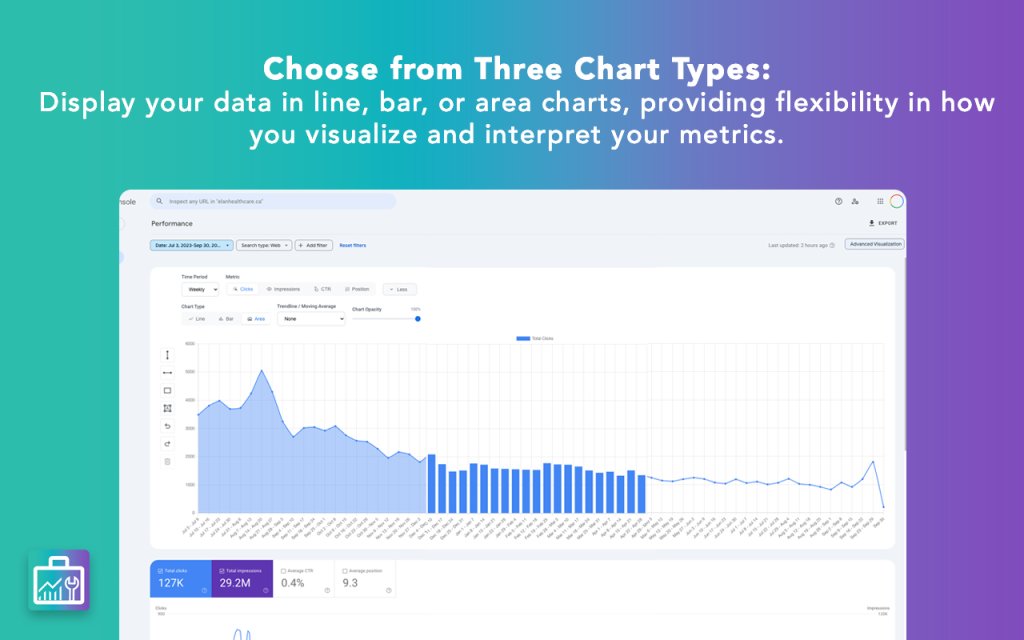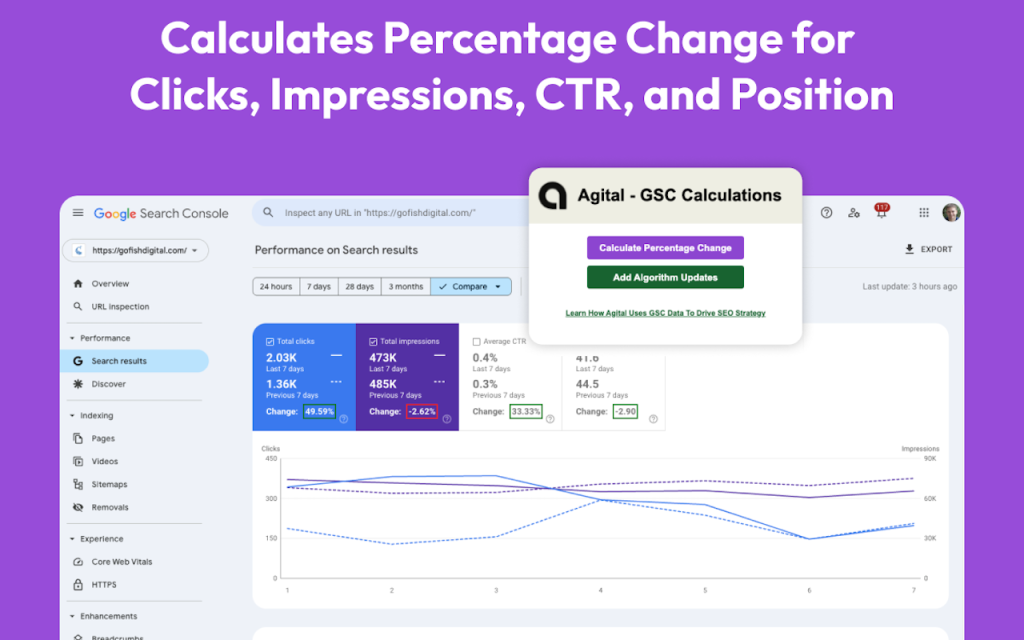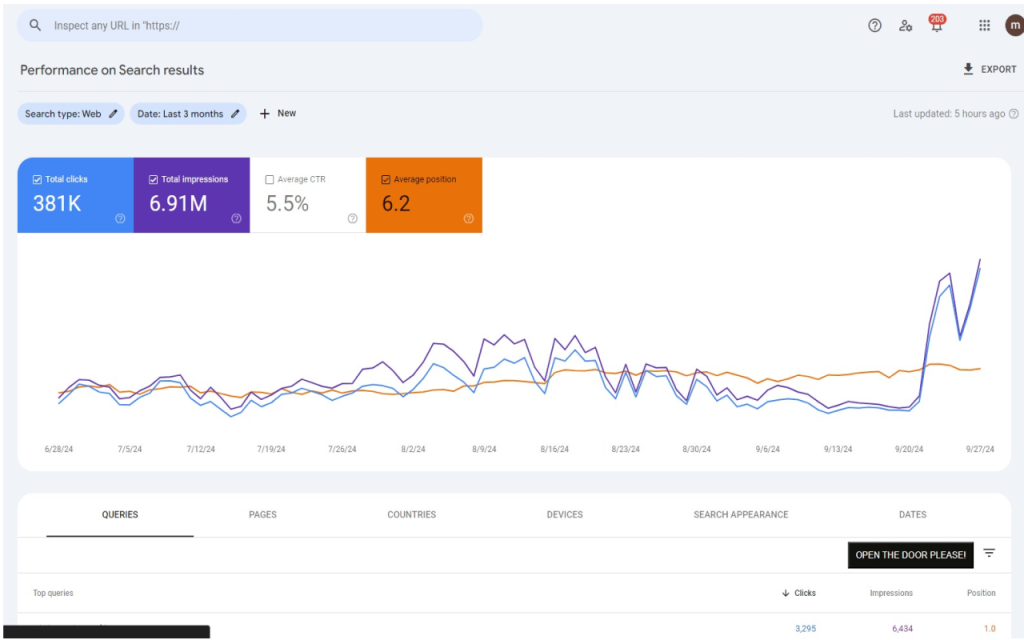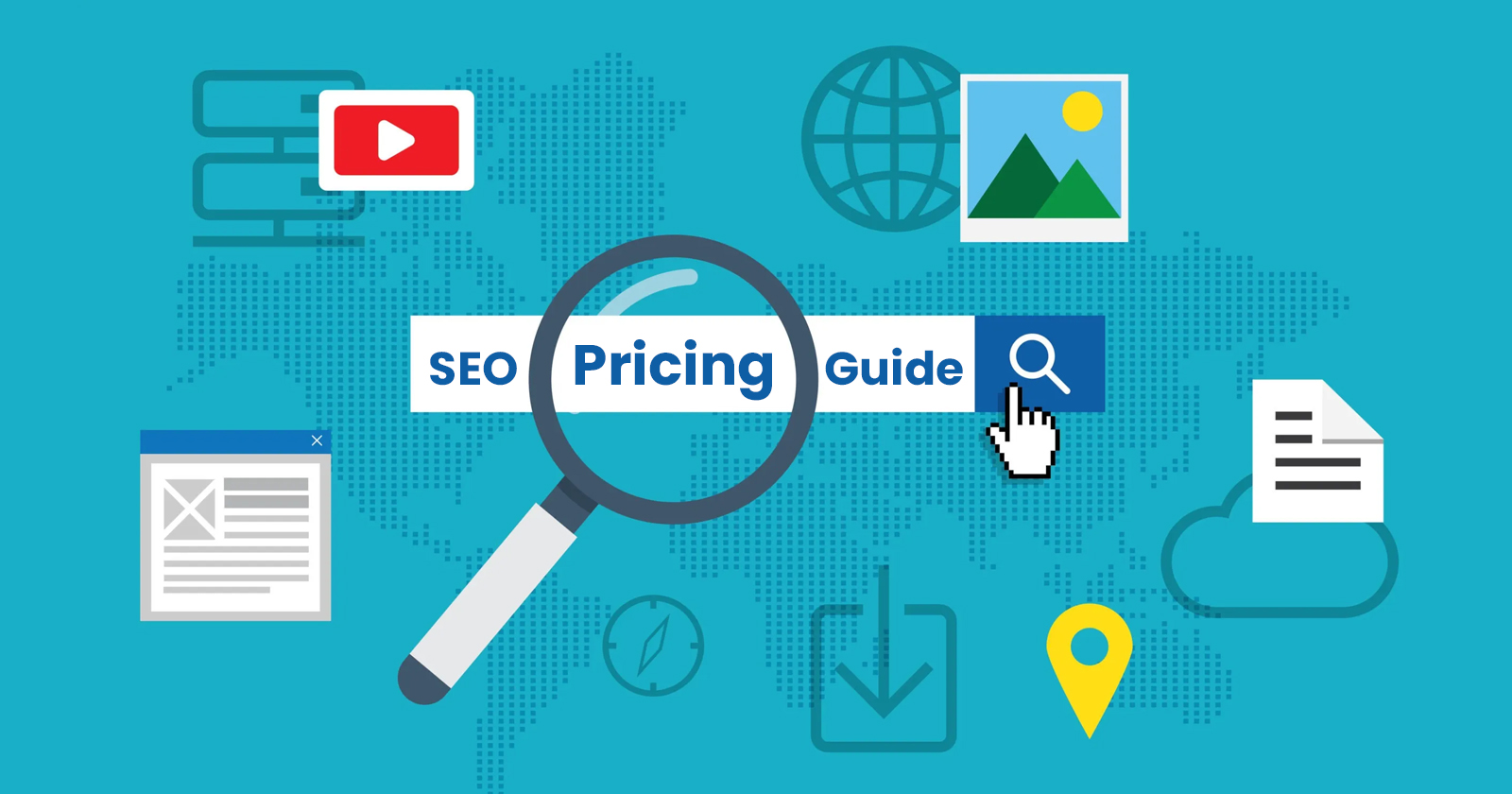Google Search Console is a necessary and an effective tool for website owners, SEO experts, and digital marketers. It gives valuable information about how well a website works, how it’s being indexed, and its technical status.
However, even though it works well, users often have trouble seeing information clearly when looking at big sets of data or complex reports in Google Search Console visualizations. These problems might include limited views, confusing charts, or trouble with sorting and comparing important metrics.
For marketers who need clear visuals to make decisions based on data, these issues can be annoying and take a lot of time. Luckily, we have a few chrome extensions to make it easier to use and understand GSC data.
By using these extensions, you can make data analysis easier, create visual reports, and share information more easily. This post looks at the chrome extensions that can provide more accurate reports, and help you make better choices for your SEO strategy.
What is Google Search Console?
Google Search Console helps website owners, SEO experts, and developers check and improve how their site shows up in Google Search. It used to be called Google Webmaster Tools, but it was changed to Google Search Console in late 2023.
GSC gives you clear information from Google about how well your website shows up in results pages. It helps you find problems with your website’s visibility in results pages, make improvements for better rankings, and create a better experience for users.
Unlike Google Analytics, which looks at how users behave, GSC shows you how Google views and interacts with your site. This makes it a must-have tool for boosting your website traffic and making sure your pages are well-set for search engines.
SEO service providers leverage Google Search Console visualizations to quickly identify performance trends, diagnose issues, and make more informed optimization decisions.
Why Should You Always Use GSC?
If you want to improve your website’s search ranking, you need to use Google Search Console. It gives important information that no other tool can provide, helping you monitor, fix problems, and improve your online visibility.
Main Features of Google Search Console
Search Performance Data
Search Performance report gives detailed information about how well your website does in Google Search results. It gives important numbers like total clicks, how many times it was seen, average click rate, and average rank.
You can look at how well different queries, pages, countries, devices, and special search results are doing. This tool helps website owners find the best keywords that work well and spot the ones that don’t perform as well.
By watching trends and changes in traffic, you can change your SEO plan as needed. It also lets you compare different times to see how changes in content or technology affect things. For businesses and creators, this information is important for improving visibility and keeping track of their search goals.
Page Indexing Reports
The Page Indexing section lets website owners check which pages of their site are included in results and which ones are not. It points out possible problems that might stop some pages from showing up in search results, like “Discovered – currently not indexed” or “Crawled – currently not indexed”.
Each status comes with information about the affected web addresses, which helps you figure out and fix indexing issues. This tool is very helpful for keeping websites visible on search engines, especially for big websites where it’s hard to check everything manually.
You can ask to have new or updated pages listed faster in search results. Also, this report helps find duplicate content, problems with choosing the main page version, and “noindex” tags that might have been added by mistake.
Crawl and Coverage Insights
This feature shows you how Googlebot looks at your website. It has details about how many pages were successfully checked, how many had problems, and how many were left out of the index. This report is important for understanding how well technical SEO is working.
Some common problems that might be noticed are server errors, endless redirects, or pages that are blocked by robots.txt or noindex tags. By looking at this data, website owners can easily spot issues that might make it hard for their site to show up in results.
The report also tells you how often your website is checked by crawlers. This can be affected by how your site is organized, how often you update your pages, and how trusted your site is.
Mobile Usability
The Mobile Usability report looks at how your website works on mobile devices. It finds problems that can make using smartphones and tablets difficult, like buttons that are too close together, text that is very small to read, or content that is too big for the screen.
Most people use their phones to visit websites, so making sure your site works well on mobile is important for your ranking and for keeping visitors from leaving quickly. This report lists the impacted URLs and gives specific advice, helping developers and website managers make focused changes.
Fixing mobile usability problems helps make your content easier for everyone to use and allows more people to see it. Google values how well websites work on mobile devices when deciding their rankings.
Security and Manual Actions
This feature informs website owners about important problems that might affect how their site shows up in results pages. Manual actions are punishments given by Google’s reviewers when a website breaks the rules.
This can happen if the site has bad backlinks, spammy content, or hidden text. If a manual action is taken, it will specify the reason and the pages affected. This helps website owners fix the problem and ask for a review.
The Security Issues report points out dangers like viruses, fake emails trying to trick you, and hacked material. It’s important to quickly deal with these warnings to rebuild trust with Google and users.
Major Drawback of GSC: Visualizations
The major issue with GSC is the visualization. But that’s something you can easily solve. GSC has a lot of information, but its reporting system can be simple and not always easy to understand quickly. That’s why SEO experts improve their workflow by connecting GSC with other tools or using chrome extensions to make search data easier to understand.
Chrome Extensions That Improve Google Search Console
Google Search Console gives important information, but its interface has some restrictions, especially for seeing and understanding key data clearly. You can connect GSC with Looker Studio to make custom reports.
But a faster and easier way to improve your GSC experience is by using special chrome extensions. These extensions provide more information, make it easier to understand data, and help you make smarter decisions when improving websites for search results.
Chrome Extensions for GSC
- Advanced GSC Visualizer – Makes Google Search Console data easier to understand and monitor.
- Agital – GSC Calculations – Adds more capabilities to GSC, helping to better segment data and analyze trends.
- Gandalf – Advanced CTR Metrics – Gives better information about how well CTR is doing, which helps improve SEO strategies.
Each of these tools fixes an important problem with Google Search Console and improves how we look at search information. In the next part, we’ll explain what each tool does and how it can make your SEO process better.
Also Read: Google Crawling & Indexing in SEO – Best Practices Revealed
How These Chrome Extensions Improve Google Search Console?
Google Search Console is a fine tool for SEO, but it has some limits in how it shows and analyzes data. That’s where chrome extensions come in. The tools here make GSC easier to use. They help you look at trends, find useful information, and make your organic search strategy better.
Advanced GSC Visualizer
The Advanced GSC Visualizer changes raw Google Search Console data into easy-to-understand charts and visual reports. Instead of using GSC’s basic setup, this tool lets users make their own graphs, add trend lines, and mark charts with notes, boxes, and arrows.
Main Features
- Interactive charts for clicks, views, click-through rate, and average ranking.
- Supports bar, line, and area charts to make comparisons easier.
- Trendlines and moving averages help understand long-term performance.
- Annotation system – mark, name, and point out important events on graphs.
- Helps show data from Discover and Google News in a visual way.
- Export and import notes for keeping track over time.
Best Use Case
Great for SEO analysts and marketers who need an easy, visual way to see their GSC data without having to export and handle it in other programs.
Also Read: What is Progressive SEO – 5 Efficient Strategies to Rank High
Agital – GSC Calculations
Agital – GSC Calculations is a tool that improves GSC by automatically figuring out percentage changes for important numbers like clicks, impressions, CTR, and ranking position. It gives quick insights about trends instead of making you compare time periods.
Main Features
- Automatic calculations for the percentage changes in clicks, impressions, CTR, and position.
- Adds Google algorithm updates to the GSC timeline to help analyze their effect on SEO.
- Table integration – view percentage changes directly in GSC’s tables.
- Works with phone number formats from around the world for users everywhere.
- Saves time by getting rid of manual calculations.
Best Use Case
Great for SEO experts who want quick, automated insights on traffic trends, comparisons before and after changes, and how Google updates affect their site, all without leaving Google Search Console.
Gandalf
Gandalf is a tool that helps you understand your website’s CTR. It organizes, sorts, and displays data from GSC to find new chances for improvement. Gandalf helps you find important keywords that can improve your search rankings by using special filters and smart keyword grouping.
Main Features
- Keyword categorization – automatically finds and groups important keywords.
- Custom metric filtering – you can organize by click-through rate, number of views, and ranking position.
- Easy-to-understand data graphics – clear and useful visual information.
- Time-saving automation – removes the need for sorting and looking at manually.
- Regular updates to keep up with Google’s newest features.
Best Use Case
SEO professionals and marketers who want to discover hidden keywords, track click-through rates, and improve their content using data.
Which GSC Extension Should You Choose?
Each of these tools has something special to offer.
- If you want better charts and graphs, choose Advanced GSC Visualizer.
- If you want fast SEO performance updates, try Agital – GSC Calculations.
- If you want to filter keywords that help improve click-through rates, install Gandalf.
To Conclude
Google Search Console gives important information to help improve website performance, but its built-in tools for showing data can sometimes be limited. This is especially true for users who need more detailed analysis or flexible reporting options.
These restrictions can make it hard to make good decisions and slow down SEO work. But with the aid of special chrome extensions, users can handle these difficulties and greatly improve their experience with GSC.
These tools make it easy to change how data looks and allows you to compare things instantly. You can also create detailed graphs and make the user experience better. Overall, they offer a lot of useful features and flexibility.
Whether you’re working on one website or several clients, adding the right tools to your browser can help you save time, do less repetitive work, and create better SEO plans. As the online world keeps changing, using tools like GSC is a good idea for keeping up with optimizing websites based on data.
FAQs
What are the usual problems with visuals in Google Search Console?
Some common issues are that you can’t change graphs much, there’s no way to filter data easily, and it’s hard to compare things like clicks, impressions, and CTRs across different categories, such as country, device, and page. Also, the interface doesn’t have features like interactive dashboards or advanced visual summaries. This can be annoying when you want to show data clearly to clients or stakeholders. These limits make it difficult to find meaningful information or notice important trends fast.
Why is good data visualization important for GSC?
Data visualization makes large volumes of complex data easier to understand and use. In GSC, users can see trends in how their website is performing in searches. It helps them notice when traffic suddenly goes up or down and shows how certain keywords, pages, or devices are helping their site do well. Without clear pictures, users might overlook important changes or misunderstand the raw numbers. They are very useful for SEO experts who need to share data with clients or team members in an effective manner.
Is the built-in interface of GSC good enough for detailed reporting and SEO analysis?
GSC is a helpful tool for seeing how well your site does in Google Search, but its reports and visual displays are quite simple. For more complex SEO tasks, like organizing keyword data by page, looking at how performance changes with the seasons, or finding long-term ranking changes, the built-in tools might not be enough. This is especially true for big websites that have thousands of web pages. That’s where browser extensions help, giving you more options and better features.
How do chrome extensions make Google Search Console data easier to understand?
Chrome extensions can improve Google Search Console by adding extra features that you can’t find in the regular version. These features include interactive charts, better ways to filter and sort data, heatmaps, grouping similar keywords, and improved options for exporting information. Some extensions work directly with spreadsheets or reporting tools, which makes it easier to create dashboards or see how performance changes over time. They make it quicker and easier to use GSC data.
Will using a chrome extension affect my real GSC data?
No, chrome extensions do not change your real Google Search Console data. They only work with the information you see in your browser to make it look better, easier to use, and sometimes help with saving it. They are an extra feature on GSC’s interface to improve your experience, but your original data stays the same and is completely safe in Google’s system. They are very helpful for SEO experts and digital marketers who need visual reports to make decisions based on data.



























